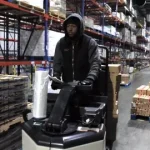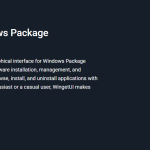If you currently hold a standard car licence and are looking to break into a stable, high-demand industry, upgrading to a light rigid license could be your gateway to a rewarding professional driving career in Melbourne.
The city has a growing need for skilled drivers in public transport, logistics, and delivery services, so making the transition has never been more accessible or worthwhile. In this article, we’ll guide you through the steps to make that transition, highlight potential job paths, and show how this licence can be the first step toward long-term success on the road.
Why Consider a Light Rigid License?
A light rigid license is a perfect upgrade from a standard car licence for those looking to expand their driving capabilities and career options. This licence allows you to operate vehicles with a gross vehicle mass (GVM) of more than 4.5 tonnes but less than 8 tonnes, or buses with up to 12 seating positions (including the driver). That means you can legally drive small trucks, delivery vans, minibuses, and similar vehicles.
Holding a light rigid licence opens doors to a range of reliable, well-paying jobs. It’s an especially attractive option for those who want to enter the transport sector without jumping straight into larger, more complicated heavy vehicles. It’s also a stepping stone toward future licence upgrades as your confidence and experience grows.
Step-by-Step Guide to Getting Your Light Rigid License in Melbourne
It’s a relatively straightforward process if you’re already a competent car driver. Here’s a clear breakdown of how to make the transition:
- Meet the Eligibility Requirements
You must have held a full car (Class C) licence for at least 12 months. Learners or probationary drivers are not eligible to apply for an LR licence.
- Book a Medical Check
A standard requirement is passing a medical fitness assessment to ensure you’re physically capable of handling a heavier vehicle safely.
- Choose a Registered Training Organisation (RTO)
Enrol in a government-approved training course in Melbourne. These courses usually combine theoretical knowledge and practical driving components.
- Complete the Training & Knowledge Test
You’ll learn about safe loading, vehicle inspections, road laws specific to larger vehicles, and more. After this, you’ll take a theory test and a practical driving assessment with an accredited instructor.
- Pass Your Practical Assessment
You’ll be evaluated on your ability to safely operate a light rigid vehicle, perform pre-start checks, and manage real-world traffic conditions.
- Receive Your Licence Upgrade
Once you pass all tests and your application is processed, your car licence will be upgraded to include LR vehicle entitlements.
First Jobs You Can Get with a Light Rigid License
Once you’ve secured your light rigid license, a variety of entry-level driving roles become available, many of which are in high demand across Melbourne. These positions not only offer steady employment but also provide valuable experience for those looking to grow in the transport industry.
Some common job opportunities include:
- School bus driver
- Courier and delivery driver
- Council and utility vehicle operator
These roles are ideal for new LR drivers because they generally involve fixed routes, local travel, and manageable vehicle sizes. They also provide a platform to learn industry expectations, customer interaction, and logistical processes, which are all essential for career advancement.
Once you’ve gained confidence and experience with your light rigid license, you can even consider progressing to a medium rigid license or an HR license in Melbourne. These higher-level licences allow you to operate larger vehicles and they open the door to even more varied job opportunities.
Tips for a Successful Career Transition
Here are some practical tips to help you succeed once you’ve obtained your light rigid license:
- Opt for a reputable and accredited training centre in Melbourne that offers hands-on experience, updated course materials, and real-world driving scenarios.
- Employers value soft skills as well. Good communication, customer service, and time management skills are essential, especially if you’re in a role that involves interacting with clients or passengers.
- A strong and clean driving history is important for building credibility with employers and qualifying for higher licence classes like the medium rigid license or HR license Melbourne.
- Follow local transport news, understand compliance requirements, and consider joining transport industry groups or forums to expand your network.
- Don’t overlook entry-level positions. They’re a chance to learn the ropes, gain trust in the industry, and build a solid resume for more advanced roles.
Conclusion
With a growing demand for qualified drivers across delivery services, public transport, and local government roles, now is a great time to upgrade your skills and qualifications. Starting with a light rigid licence not only opens doors to immediate job opportunities but also sets you on a clear path to progress to a medium rigid license and eventually an HR license in Melbourne. Take the first step today and drive your career forward.









